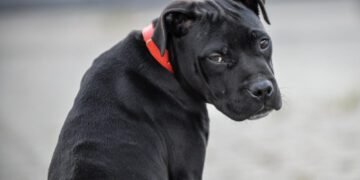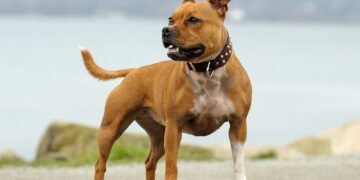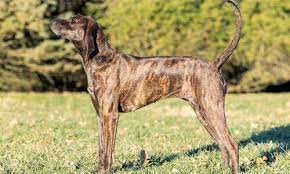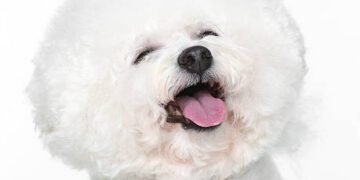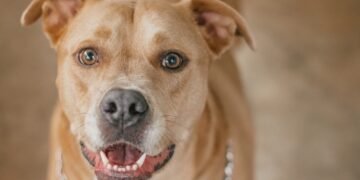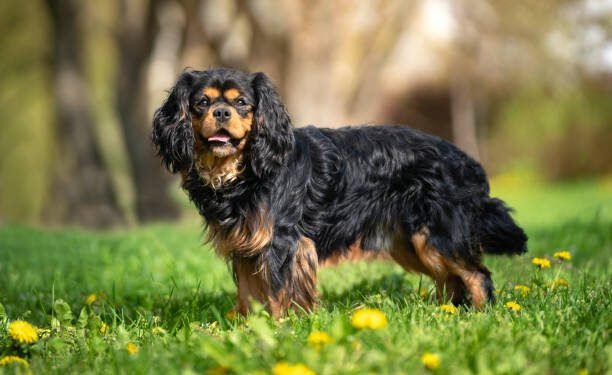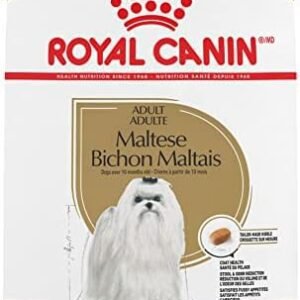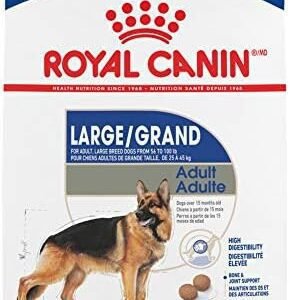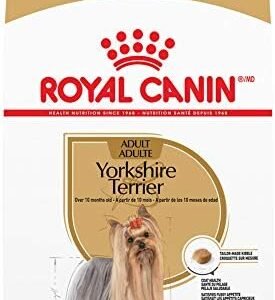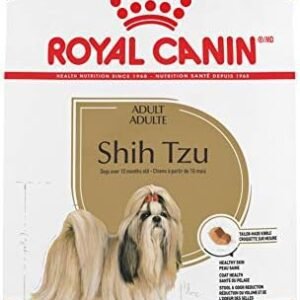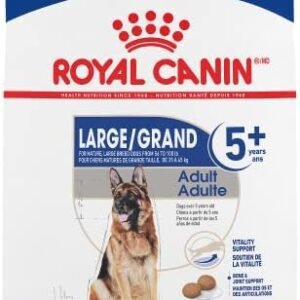Cavalier King Charles Spaniels, often referred to as Cavaliers, are a breed of dog that has captured the hearts of many with their regal appearance and loving disposition. In this comprehensive guide, we will delve into the world of Cavalier King Charles Spaniels, exploring their unique characteristics, care requirements, and everything you need to know about this delightful breed.

Introduction
Did you know? The Cavalier King Charles Spaniel was named after King Charles II of England, who had a deep affection for this breed and was rarely seen without one by his side.
Welcome to the enchanting world of Cavalier King Charles Spaniels. If you’re considering adding a furry friend to your family or simply want to learn more about this captivating breed, you’ve come to the right place. In this guide, we will provide you with an extensive overview of the Cavalier King Charles Spaniel, covering all aspects from their physical attributes to their temperament and care needs.
In the age of the internet, information about dog breeds is readily available, but it can often be overwhelming and conflicting. That’s why we believe in the importance of a comprehensive and up-to-date source for all things related to Cavaliers. Whether you’re a prospective owner or an enthusiast, this guide will serve as your trustworthy companion on your journey to understanding and caring for these charming dogs.
Cavalier King Charles Spaniel Breed Profile
To kick things off, let’s take a closer look at the key characteristics and attributes of the Cavalier King Charles Spaniel. This breed is known for its elegance, gentle nature, and affectionate disposition. Here’s a table summarizing essential information about Cavaliers:
| Field | Information |
|---|---|
| Height | 12 to 13 inches (30 to 33 cm) |
| Weight | 13 to 18 pounds (6 to 8 kg). |
| Life Span | Not known |
| Good with | Children, other pets |
| Temperament | Affectionate, friendly |
| Intelligence | Moderately intelligent |
| Shedding Amount | Moderate |
| Grooming | Regular brushing needed |
| Exercise Needs | Moderate |
| Energy Level | Moderate |
| Barking Level | Low |
| Drool Amount | Minimal |
| Coat Length/Texture | Long, silky |
| Colors | Various solid colors |
| Patterns | Blenheim, tricolor, etc. |
Please note that while we strive to provide as much information as possible, some specific details such as height, weight, and lifespan may vary from one individual to another within the breed. It’s important to consult with reputable breeders and veterinarians for precise information about the Cavalier King Charles Spaniel you plan to bring into your life.
In the following sections, we will dive deeper into each of these aspects, allowing you to gain a thorough understanding of this beloved breed and how to provide them with the care and love they deserve. So, let’s embark on this royal journey together!
2. Breed History and Origin

Exploring Their Roots
To truly appreciate the Cavalier King Charles Spaniel, it’s essential to understand their rich history and the lineage that has shaped this beloved breed. Let’s delve into the fascinating journey of how these charming dogs came to be.
The Royal Connection: The story of the Cavalier King Charles Spaniel begins in the royal courts of Europe, particularly in 17th-century England. King Charles II, known as the “Merry Monarch,” had a deep fondness for small spaniel-type dogs. These dogs were often depicted in paintings and tapestries alongside the King, becoming synonymous with the royal court.
Ancestral Breeds: The development of the Cavalier King Charles Spaniel involved the crossbreeding of several small spaniel-type breeds, which were popular in England during that era. Some of the notable ancestral breeds that played a role in the Cavalier’s formation include:
- English Toy Spaniels: These elegant and affectionate dogs were a favorite among British aristocracy. They possessed the distinctive domed head shape that has become a hallmark of the Cavalier King Charles Spaniel.
- King Charles Spaniels: These dogs, closely associated with King Charles II, were selectively bred for their unique appearance and friendly temperament. They contributed significantly to the breed’s name and characteristics.
- Papillons and Pugs: It is believed that these breeds were also introduced to add refinement and specific physical traits to the emerging Cavalier breed.
The Restoration Period: The Cavalier King Charles Spaniel’s popularity soared during the Restoration period in England, under the reign of King Charles II. These dogs were cherished companions at court and were often seen nestled on the laps of the aristocracy.
Notable Traits
What sets the Cavalier King Charles Spaniel apart in history are its remarkable traits and distinctive features that have endured through the centuries:
- Affectionate Temperament: From their inception, Cavaliers were bred for their affectionate and sociable nature. This trait endears them to families, making them excellent companions and therapy dogs.
- Elegant Appearance: The Cavalier’s graceful appearance, with its expressive eyes and silky, flowing coat, has been admired by generations. This elegance has made them a favorite subject of artists and photographers.
- Royal Endorsement: The breed’s association with British royalty, especially King Charles II, gave them a regal status that continues to this day. Their name itself, “Cavalier King Charles Spaniel,” pays homage to this royal history.
- Adaptability: Cavaliers are known for their adaptability to various living situations. Whether in a palace or a cozy home, they thrive on human companionship.
Relevance of Origin
Understanding the origins of the Cavalier King Charles Spaniel provides valuable insights into why they exhibit certain traits and behaviors today:
- Temperamental Charms: The breed’s historical role as a companion to nobility has influenced their affectionate and people-oriented temperament. They are social dogs that thrive on human interaction.
- Appearance and Standards: The Cavalier’s origins in royal courts and noble circles have set a high standard for their appearance. Breed standards emphasize their elegant, well-proportioned bodies, and silky coats.
- Health Considerations: Knowledge of the breed’s history can also shed light on potential health issues. For example, syringomyelia, a condition affecting the spine, is more prevalent in Cavaliers due to their breeding history. Being aware of these historical factors helps modern breeders and owners take proactive steps in maintaining their dogs’ health.
In conclusion, the Cavalier King Charles Spaniel’s history is a captivating tale of royal favor, refined elegance, and enduring charm. This breed’s journey from the royal courts of Europe to the hearts of dog lovers worldwide is a testament to their timeless appeal. In the next section, we will explore their unique physical characteristics in greater detail, shedding light on what makes them such a beloved breed today.
3. Understanding the Cavalier King Charles Spaniel Breed’s Traits
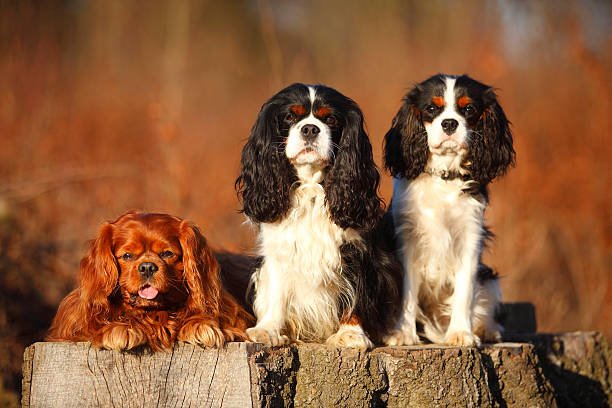
Physical Characteristics
Cavalier King Charles Spaniels are a breed cherished for their distinct physical attributes, which combine elegance and charm. Let’s take a closer look at the defining characteristics of this breed:
Size: Cavaliers are a small to medium-sized breed. On average, they stand between 12 to 13 inches (30 to 33 cm) at the shoulder and typically weigh between 13 to 18 pounds (6 to 8 kg).
Coat Type: The Cavalier’s coat is one of its most distinguishing features. It is long, silky, and soft to the touch. Their coat is not overly dense, making it manageable for grooming.
Colors: The breed comes in various solid colors, including Blenheim (rich chestnut markings on a pearly white background), Tricolor (black and white with tan markings), Black & Tan, and Ruby (a rich, solid red). Each of these color patterns contributes to the breed’s visual diversity.
Distinguishing Features: Cavaliers have expressive, dark, round eyes that convey warmth and affection. Their ears are long and feathered, framing their gentle faces. The breed’s tail is typically carried high and often wags merrily, expressing their joyful disposition.
Temperament Overview
Cavalier King Charles Spaniels are renowned for their delightful temperament, making them excellent family pets. Here’s an overview of their personality traits:

Affectionate: Cavaliers are true lap dogs. They thrive on human companionship and are known for their affectionate nature. They are equally content cuddling on the couch or going for a leisurely walk.
Friendly: These dogs are social butterflies. They are quick to make friends, whether with humans or other pets. Their friendly disposition makes them a fantastic addition to families with children.
Gentle: Cavaliers are gentle souls. They are rarely aggressive and are known for their patience and tolerance, making them an ideal choice for families with kids.
Adaptable: This breed is highly adaptable and can thrive in various living environments. Whether you reside in an apartment or a spacious house with a yard, Cavaliers adjust well.
Playful: Despite their regal appearance, Cavaliers have a playful side. They enjoy games, fetch, and interactive toys. Their love for playtime makes them engaging companions for both adults and children.
Compatible with Other Pets: Cavaliers typically get along well with other pets, including cats. Their social nature makes them amicable in multi-pet households.
Safe with Children: Cavaliers are known for their gentle demeanor, making them one of the safest dog breeds for families with children. They are patient and tolerant, even with the exuberance of young kids.
Environment Needs
Cavalier King Charles Spaniels are relatively adaptable when it comes to their living environment. Here are some considerations for providing the ideal home for your Cavalier:
Space: While they can adapt to apartment living, Cavaliers appreciate access to a yard where they can explore and play. Regular walks and playtime are essential to keep them mentally and physically stimulated.
Temperature: Cavaliers have a long, silky coat that provides some insulation, but they are not well-suited for extreme cold or hot weather. It’s crucial to protect them from harsh weather conditions.
Social Interaction: As social dogs, Cavaliers thrive on interaction with their human family members. They do best in homes where they are not left alone for extended periods.
Exercise: While they are not overly demanding in terms of exercise, Cavaliers still need daily walks and playtime to stay happy and healthy. Aim for at least 30 minutes of moderate exercise each day.
Comfort: Their silky coat requires regular brushing to prevent matting and tangling. Additionally, provide a comfortable and cozy spot for your Cavalier to rest, as they love lounging.
Training and Socialization
Cavalier King Charles Spaniels are generally eager to please, which makes them relatively easy to train. However, it’s essential to start training and socialization early to ensure they grow into well-mannered adults:
Basic Obedience: Cavaliers respond well to positive reinforcement training methods. Basic commands such as sit, stay, and recall are essential for their safety and your peace of mind.
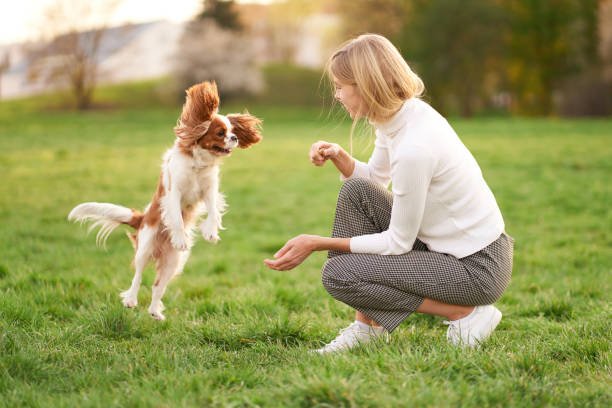
Socialization: Expose your Cavalier to various people, animals, and environments from a young age. This helps them become well-adjusted and confident adults.
Consistency: Be consistent with your training and boundaries. Cavaliers are sensitive dogs and respond best to gentle guidance.
Patience: While they are intelligent, Cavaliers can have a stubborn streak at times. Patience and positive reinforcement will yield the best results.
In summary, the Cavalier King Charles Spaniel is a breed that combines physical beauty with a loving and adaptable temperament. They are well-suited to families, singles, and seniors alike, as long as they receive the love and attention they crave. In the next section, we’ll explore the essential care and maintenance required to keep your Cavalier healthy and happy throughout their life.
4. Health Considerations and Care
Taking care of your Cavalier King Charles Spaniel’s health is paramount to ensuring a long, happy, and fulfilling life for your beloved pet. In this section, we will explore the common health issues associated with this breed, their average lifespan, dietary needs, exercise requirements, grooming practices, and more.
Common Health Issues
While Cavaliers are generally robust dogs, they are prone to certain health issues that potential owners should be aware of:
- Heart Conditions: Mitral Valve Disease (MVD) is prevalent in Cavaliers. Regular heart check-ups are crucial, as early detection and treatment can extend their lifespan.
- Syringomyelia (SM): SM is a neurological condition that affects the spinal cord. It can cause severe discomfort and pain. Look for signs such as scratching, yelping, or sensitivity around the neck area.
- Ear Problems: Their long, floppy ears can trap moisture, leading to ear infections. Regular cleaning and drying of the ears are essential.
- Eye Conditions: Cavaliers may be susceptible to eye problems such as cataracts and retinal issues. Routine eye examinations can help catch and address these issues early.
- Orthopedic Concerns: Hip dysplasia and luxating patellas are orthopedic issues that can affect Cavaliers. Maintaining a healthy weight and providing joint supplements may help mitigate these concerns.
- Dental Health: Dental problems can arise due to their small mouths and crowded teeth. Regular dental care, including brushing and professional cleanings, is essential.
Lifespan and Longevity
The average lifespan of a Cavalier King Charles Spaniel typically ranges from 10 to 14 years. To ensure your Cavalier enjoys a longer and healthier life, consider the following tips:
Regular Veterinary Check-ups: Schedule annual check-ups with your veterinarian to catch any health issues early. Senior Cavaliers may benefit from bi-annual visits.
Healthy Diet: Feed your Cavalier a balanced and age-appropriate diet. Consult your vet for recommendations on the best dog food for your specific pet. Avoid overfeeding and monitor portion sizes to prevent obesity.
Exercise and Mental Stimulation: Provide daily exercise and mental stimulation to keep your Cavalier physically fit and mentally sharp. Regular walks, playtime, and puzzle toys are excellent ways to achieve this.
Weight Management: Obesity can lead to various health problems. Maintain a healthy weight for your Cavalier through proper diet and exercise.
Dental Care: Brush your Cavalier’s teeth regularly and consider dental chews or toys to promote good oral health.
Heart Health: Monitor for signs of heart disease, such as coughing or lethargy, and discuss any concerns with your vet. Medications can help manage heart conditions if detected early.
Diet and Nutrition
Proper nutrition is essential for the well-being of your Cavalier King Charles Spaniel. Here are some dietary considerations:
High-Quality Dog Food: Choose a high-quality commercial dog food that meets the nutritional needs of Cavaliers. Look for options that list meat as the primary ingredient.
Portion Control: Cavaliers can be prone to overeating, so monitor their portion sizes to maintain a healthy weight. Consult your vet for guidance on portion control.
Avoid Toxic Foods: Some human foods are toxic to dogs, including chocolate, grapes, and onions. Keep these substances out of reach.
Fresh Water: Ensure your Cavalier has access to fresh, clean water at all times to prevent dehydration.
Special Dietary Needs: If your Cavalier has specific dietary requirements or allergies, consult your vet for personalized feeding recommendations.
Exercise and Activity
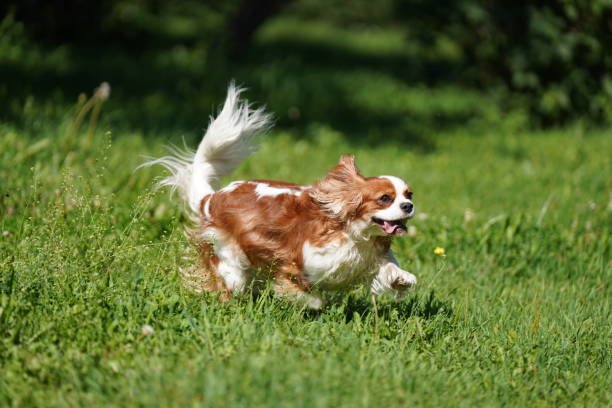
Cavaliers may have a laid-back demeanor, but they still require regular exercise and mental stimulation to stay healthy and happy. Here are some exercise guidelines:
Daily Walks: Aim for at least one 30-minute walk per day to help burn off excess energy.
Playtime: Engage in interactive play sessions with toys or games like fetch to keep your Cavalier mentally stimulated.
Socialization: Encourage interactions with other dogs and people to promote good behavior and prevent shyness or fearfulness.
Training: Mental exercise is as important as physical activity. Regular training sessions not only keep your dog well-behaved but also mentally engaged.
Grooming and Maintenance
Cavalier King Charles Spaniels have a beautiful, silky coat that requires regular grooming:
Brushing: Brush your Cavalier’s coat several times a week to prevent matting and tangles. Pay special attention to the feathering on their ears, chest, and tail.
Bathing: Bathe your dog as needed, typically every 4-6 weeks, or when they get dirty. Use a gentle dog shampoo to avoid skin irritation.
Ear Cleaning: Check their ears weekly for dirt or wax buildup, and clean them with a veterinarian-recommended ear cleaner if necessary.
Eye Care: Cavaliers are prone to eye discharge, so gently clean their eyes as needed to prevent staining.
Dental Care: Brush your Cavalier’s teeth regularly to prevent dental problems. Dental chews and toys can also help maintain oral health.
Nail Trimming: Trim your dog’s nails every few weeks to prevent overgrowth and discomfort.
In conclusion, taking care of a Cavalier King Charles Spaniel requires attention to their specific health needs, a balanced diet, regular exercise, and proper grooming. By providing them with the care they deserve, you can enjoy the companionship of this loving breed for many joyful years to come. In the next section, we’ll explore the ideal living conditions and environment for Cavaliers, including tips for training and socialization.
5. Choosing and Adopting a Cavalier King Charles Spaniel Dog Breed
Adopting a Cavalier King Charles Spaniel can be a rewarding experience, but it’s essential to approach the process with care and consideration. In this section, we’ll explore the reasons for adopting this breed, provide tips on research and preparation, explain the adoption process, and touch on responsible breeding and ethical considerations.
Reasons for Adoption
Adopting a Cavalier King Charles Spaniel from a rescue organization or shelter offers a range of benefits:
1. Give a Second Chance: By adopting, you provide a loving home to a dog in need. Many Cavaliers end up in shelters due to unforeseen circumstances, and adopting them gives them a fresh start in life.
2. Known Temperament: Rescue organizations often provide valuable information about the dog’s temperament and behavior, helping you find a dog that matches your lifestyle and preferences.
3. Health Screening: Reputable rescue organizations ensure that the dogs are spayed/neutered, up-to-date on vaccinations, and may even conduct health screenings. This can save you time and money on initial vet visits.
4. Support a Worthy Cause: Your adoption fee typically contributes to the rescue organization’s mission of saving more dogs. It’s a meaningful way to support animal welfare.
5. Avoid Puppy Mills: Adopting from rescue organizations helps combat puppy mills and unethical breeding practices. You’re promoting responsible pet ownership.
Research and Preparation
Before adopting a Cavalier King Charles Spaniel, it’s crucial to research and prepare adequately:
Understand the Breed: Learn about the specific needs, traits, and potential health issues of Cavaliers. This knowledge will help you make an informed decision and provide proper care.
Financial Responsibilities: Be prepared for the financial commitments associated with dog ownership, including food, grooming, vet visits, and potential medical expenses.
Lifestyle Compatibility: Assess your lifestyle to ensure it aligns with the breed’s requirements. Cavaliers thrive on companionship and moderate exercise.
Training and Socialization: Familiarize yourself with training techniques and the importance of early socialization to raise a well-adjusted dog.
Pet-Proof Your Home: Make your home safe for your new pet by removing potential hazards and ensuring that your space is dog-friendly.
Adoption Process
The adoption process for a Cavalier King Charles Spaniel typically involves several steps:
1. Research Rescue Organizations: Find reputable rescue organizations or breed-specific clubs that specialize in Cavaliers. Look for reviews, recommendations, and their track record in dog rescue.
2. Application: Submit an adoption application, which may include questions about your living situation, experience with dogs, and how you plan to care for the dog.
3. Home Visit: Some organizations conduct home visits to assess whether your living environment is suitable for a Cavalier. Be prepared to demonstrate that you can provide a safe and loving home.
4. Adoption Fee: Expect to pay an adoption fee, which helps cover the costs of the dog’s care, vaccinations, spaying/neutering, and other expenses.
5. Meet-and-Greet: You will likely have the opportunity to meet the dog in person. This interaction helps both you and the dog assess compatibility.
6. Adoption Agreement: Once approved, you’ll sign an adoption agreement outlining your responsibilities and the rescue organization’s expectations.
7. Bringing Your Cavalier Home: Prepare your home for the new addition, including food, bedding, and toys. Be patient as your new pet adjusts to their new environment.
8. Post-Adoption Support: Reputable rescue organizations often provide post-adoption support and resources to help you with the transition.
Breeding and Ethical Considerations
If you decide to pursue acquiring a Cavalier King Charles Spaniel from a breeder, it’s essential to consider responsible breeding practices:
Choose a Reputable Breeder: Look for breeders who prioritize the health and well-being of their dogs over profit. They should be willing to provide health records, references, and allow visits to their breeding facilities.
Health Screening: Ethical breeders conduct health screenings to minimize the risk of hereditary diseases common in the breed, such as heart and neurological conditions. Ask for proof of health testing.
Genetic Diversity: Responsible breeders work to maintain genetic diversity within the breed to reduce the prevalence of inherited health issues.
Ask Questions: Don’t hesitate to ask questions about the breeder’s practices, the puppy’s upbringing, and the care provided to both the puppies and the parent dogs.
Avoid Puppy Mills: Never support puppy mills or backyard breeders who prioritize profit over the welfare of the dogs. These sources often produce dogs with health and behavioral problems.
In conclusion, choosing to adopt a Cavalier King Charles Spaniel is a commendable decision that can bring joy to your life while giving a deserving dog a loving home. Whether adopting from a rescue organization or seeking a responsible breeder, thorough research and preparation are essential to ensure a positive experience for both you and your furry companion. In the next section, we will explore training and socialization strategies to help your Cavalier become a well-behaved and happy member of your family.
6. Popularity and Recognition
Understanding the popularity and recognition of the Cavalier King Charles Spaniel provides valuable insights into the breed’s current status, its historical significance, and the diversity within the breed. In this section, we will explore the breed’s present-day popularity, recognition by kennel clubs and breed organizations, and any notable breed varieties or subtypes.
Current Popularity
The Cavalier King Charles Spaniel continues to be a beloved and popular breed among dog enthusiasts worldwide. Here’s a closer look at the breed’s current popularity and any notable trends in ownership:
Companion Animal: Cavaliers are primarily kept as companion animals due to their affectionate nature and compatibility with families and individuals alike.
Consistent Popularity: The breed has maintained its popularity over the years, consistently ranking among the top breeds in various countries.
Social Media Presence: Cavaliers have a significant presence on social media platforms, with dedicated accounts showcasing their adorable antics and charming personalities.
Trends in Ownership: There has been a growing trend of adopting Cavaliers from rescue organizations, reflecting a heightened awareness of the importance of pet adoption and rescue.
Celebrity Endorsement: Several celebrities and public figures have shared their love for Cavaliers, further boosting the breed’s profile.
Therapy and Service Dogs: Cavaliers are increasingly recognized for their suitability as therapy and service dogs due to their gentle temperament.
Breed Recognition
The Cavalier King Charles Spaniel enjoys recognition and standardization by prominent kennel clubs and breed organizations. This recognition ensures that the breed adheres to specific standards in terms of appearance and temperament. Here are some key points regarding breed recognition:
American Kennel Club (AKC): The Cavalier King Charles Spaniel is recognized by the AKC and is part of the Toy Group. The AKC sets breed standards for Cavaliers, including specifications for size, coat color, and overall appearance.
The Kennel Club (UK): In its home country, the United Kingdom, the breed is recognized by The Kennel Club, which also maintains breed standards.
Fédération Cynologique Internationale (FCI): The FCI, the international canine organization, recognizes the Cavalier King Charles Spaniel and has established breed standards that are followed by kennel clubs in various countries.
Breed Organizations: Numerous breed-specific clubs and organizations, such as the American Cavalier King Charles Spaniel Club and the Cavalier King Charles Spaniel Club (UK), are dedicated to promoting the breed and ensuring responsible breeding practices.
Notable Breed Varieties
While the Cavalier King Charles Spaniel is a distinct breed with established standards, there are some variations and subtypes within the breed, often related to coat color and patterns. Here are notable varieties:
1. Blenheim: Blenheim Cavaliers have rich chestnut markings on a pearly white background. The distinct chestnut “blaze” on their forehead is a hallmark of this variety.
2. Tricolor: Tricolor Cavaliers are black and white with tan markings. They typically have tan spots above their eyes, on their cheeks, and inside their ears.
3. Black & Tan: As the name suggests, Black & Tan Cavaliers have a black coat with tan markings on their eyebrows, cheeks, chest, legs, and paws.
4. Ruby: Ruby Cavaliers are a solid, rich red color with no white markings. They have a striking, monochromatic appearance.
5. Rare Colors: In addition to the standard colors, there are rare color variations, such as solid black or solid sable. These colors, while less common, can still be found within the breed.
It’s important to note that, regardless of coat color, all Cavaliers share the same lovable temperament and qualities that make them such cherished companions.
In summary, the Cavalier King Charles Spaniel maintains its popularity as a beloved companion breed with a strong presence in the world of dog enthusiasts. Recognized by prominent kennel clubs and organizations, this breed’s standards ensure its adherence to specific traits and characteristics. While there are various coat color varieties, the Cavalier’s heartwarming personality remains consistent across all variations, making it a timeless favorite among dog lovers.
7. Exercise and Activity Recommendations
Ensuring that your Cavalier King Charles Spaniel gets the right amount and type of exercise is essential for their physical health and mental well-being. In this section, we’ll provide a detailed exercise plan, address any breed-specific exercise needs, and offer recommendations to keep your Cavalier active and happy.
Exercise Plan
Cavalier King Charles Spaniels are moderately active dogs that enjoy a balance of play, walks, and mental stimulation. Here’s a comprehensive exercise plan for your Cavalier:
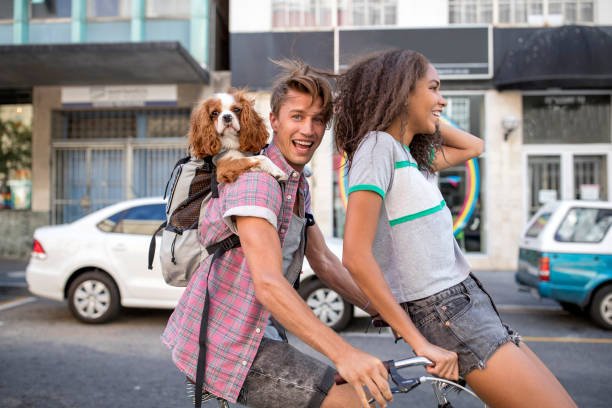
1. Daily Walks: Aim for at least one 30-minute walk per day. Cavaliers enjoy exploring their surroundings and benefiting from the sights and smells during walks.
2. Playtime: Engage in interactive play sessions with your Cavalier. Games like fetch and tug-of-war are excellent choices. These activities not only provide physical exercise but also stimulate their minds.
3. Off-Leash Play: If you have access to a securely fenced yard or a safe, enclosed area, allow your Cavalier to have some off-leash playtime. This allows them to run freely and burn off excess energy.
4. Social Interaction: Cavaliers are social dogs and enjoy the company of other dogs. Arrange playdates with other friendly dogs to provide socialization and exercise.
5. Puzzle Toys: Invest in puzzle toys that challenge your Cavalier’s problem-solving skills. These toys can keep them mentally engaged and prevent boredom.
6. Obedience Training: Incorporate obedience training sessions into your daily routine. Mental stimulation through training exercises can tire them out just as effectively as physical exercise.
7. Agility Training: Some Cavaliers enjoy agility training, which involves navigating obstacles and challenges. It’s a fun way to keep them active and mentally sharp.
Breed-Specific Exercise Needs
Cavalier King Charles Spaniels have a few breed-specific exercise needs to consider:
1. Social Interaction: As mentioned earlier, Cavaliers thrive on social interaction. Ensure they have regular opportunities to interact with humans and other dogs to prevent loneliness and separation anxiety.
2. Water Activities: Many Cavaliers have a natural affinity for water. If your dog enjoys it, consider introducing them to swimming. It’s an excellent low-impact exercise that can be especially beneficial for older Cavaliers or those with joint issues.
3. Gentle on Joints: Cavaliers can be prone to certain joint problems, so it’s essential to be mindful of the impact exercise has on their joints. Avoid activities that involve jumping from heights or strenuous activities that may put stress on their joints.
4. Moderate Exercise: While they enjoy playtime and activity, avoid overexertion, especially in hot weather. Cavaliers are not built for intense exercise, and they can quickly become overheated.
Nutrition and Feeding Guidelines
Maintaining a healthy diet is crucial for your Cavalier King Charles Spaniel’s overall well-being. Here are specific dietary recommendations and guidelines:
1. High-Quality Dog Food: Choose a high-quality commercial dog food that is appropriate for your Cavalier’s age, size, and activity level. Look for options that list meat as the primary ingredient.
2. Portion Control: Monitor portion sizes to prevent overfeeding and obesity. The recommended daily amount varies based on factors like age and activity level. Consult your veterinarian for guidance on portion control.
3. Age-Appropriate Diet: Puppies, adult dogs, and seniors have different nutritional requirements. Ensure that the food you choose is appropriate for your Cavalier’s life stage.
4. Dietary Restrictions: Some Cavaliers may have food allergies or sensitivities. Be mindful of any adverse reactions to certain ingredients and choose hypoallergenic options if necessary.
5. Feeding Schedule: Establish a regular feeding schedule with set mealtimes. Avoid leaving food out all day, as it can lead to overeating.
6. Fresh Water: Provide your Cavalier with access to fresh, clean water at all times to prevent dehydration.
7. Treats and Snacks: Limit treats and snacks, as excessive indulgence can lead to weight gain. Choose healthy, low-calorie treats for training and rewards.
8. Special Dietary Considerations: If your Cavalier has specific health conditions, such as heart disease or allergies, work with your veterinarian to develop a specialized diet plan.
Remember that individual Cavalier King Charles Spaniels may have unique dietary needs, so it’s essential to consult with your veterinarian to tailor a nutrition plan that suits your dog’s specific requirements.
In conclusion, providing your Cavalier King Charles Spaniel with the right amount and type of exercise, along with a balanced diet, is key to ensuring their health and happiness. Tailor your exercise routine to your dog’s individual preferences and needs, and consult with your veterinarian to establish a nutrition plan that supports their overall well-being. By following these guidelines, you can enjoy many joyful and active years with your beloved Cavalier.
8. Socialization and Training Tips
Socializing and training your Cavalier King Charles Spaniel is essential to ensure they become well-behaved and confident companions. In this section, we’ll provide breed-specific training tips and offer advice on how to socialize your Cavalier with other dogs and people.
Training Tips
Cavalier King Charles Spaniels are known for their friendly and eager-to-please nature, making them relatively easy to train. However, it’s important to be consistent and use positive reinforcement techniques to achieve the best results. Here are some training tips tailored to the breed:
1. Positive Reinforcement: Use positive reinforcement methods such as treats, praise, and play to reward good behavior. Cavaliers respond well to encouragement and rewards.
2. Early Socialization: Start socializing your Cavalier from a young age. Expose them to various people, animals, and environments to build confidence and prevent shyness or fearfulness.
3. Obedience Training: Cavaliers are intelligent dogs that enjoy learning. Enroll in obedience classes to teach them essential commands like sit, stay, come, and leave it.
4. Be Patient: Cavaliers are sensitive dogs, so patience and gentleness are key. Avoid harsh training methods or punishment, as it can lead to fear or anxiety.
5. Consistency: Maintain a consistent training routine with regular sessions. Short, frequent training sessions work better than long, infrequent ones.
6. Social Rewards: Cavaliers are social dogs and thrive on interaction with their owners. Use social interaction as a reward during training to reinforce positive behavior.
7. Leash Training: Teach your Cavalier leash manners early. They enjoy walks but may pull if not properly trained. Use positive reinforcement when they walk calmly on a leash.
8. Housetraining: Be consistent with housetraining. Cavaliers are quick learners, but accidents can happen if you’re not vigilant.
9. Crate Training: Consider crate training as a safe and comfortable space for your Cavalier. It can also aid in housetraining.
10. Be Playful: Incorporate play into your training sessions. Cavaliers love to play, and it keeps them engaged and motivated.
Socialization Tips
Socializing your Cavalier King Charles Spaniel is crucial to ensure they are well-adjusted and comfortable in various situations. Here are some socialization tips:
1. Early Exposure: Begin socialization early, ideally when your Cavalier is a puppy. This is when they are most receptive to new experiences.
2. Expose to Various People: Introduce your dog to different people of various ages, ethnicities, and appearances. This helps them become comfortable around strangers.
3. Other Dogs: Arrange playdates with other friendly dogs to promote positive interactions and teach appropriate social behavior.
4. Different Environments: Take your Cavalier to various places, including parks, markets, and pet-friendly stores. This exposes them to different sights, sounds, and smells.
5. Handling: Gently handle your dog’s paws, ears, and mouth from an early age. This makes them comfortable with grooming and vet visits.
6. Positive Experiences: Ensure that socialization experiences are positive and stress-free. Reward your Cavalier with treats and praise during and after each socialization session.
7. Puppy Classes: Consider enrolling your puppy in puppy socialization classes, where they can interact with other puppies under supervision.
8. Desensitization: If your Cavalier is fearful of specific stimuli (e.g., thunderstorms or vacuum cleaners), gradually expose them to these situations while providing reassurance and rewards.
Remember that socialization is an ongoing process throughout your dog’s life. Regular exposure to new experiences and people helps maintain their social skills and prevents fear or aggression issues.
9. Common Behavioral Traits
Cavalier King Charles Spaniels are known for their delightful personality, but like all breeds, they have certain behavioral traits, both positive and challenging. Understanding these traits is essential for effective training and management.
Positive Behavioral Traits
1. Affectionate: Cavaliers are affectionate and love to cuddle. They form strong bonds with their owners and enjoy being close to them.
2. Friendly: They are known for their friendly and sociable nature. Cavaliers often get along well with other dogs and are usually good with children.
3. Playful: Cavaliers have a playful spirit and enjoy interactive games and toys. They bring joy and laughter to their families.
4. Intelligent: These dogs are intelligent and quick learners, making them responsive to training and eager to please.
5. Adaptability: Cavaliers adapt well to various living environments, from apartments to houses with yards, as long as they receive enough attention and exercise.
6. Low Aggression: They typically have a low aggression level and are not prone to aggressive behavior unless poorly socialized or mistreated.
Challenging Behavioral Traits
1. Separation Anxiety: Cavaliers are prone to separation anxiety and may become distressed when left alone for extended periods. Crate training and gradual alone-time can help.
2. Barking: Some Cavaliers can be prone to excessive barking, especially if they are anxious or bored. Proper training can help manage this behavior.
3. Chasing Instinct: Due to their hunting background, Cavaliers may have a strong chasing instinct, which can lead to chasing small animals or moving objects.
4. Stubbornness: While generally obedient, Cavaliers can be stubborn at times. Patience and positive reinforcement are essential when training.
5. Velcro Dogs: Cavaliers often form strong attachments and may follow their owners everywhere, sometimes to the point of being underfoot.
6. Health Sensitivity: They can be sensitive to certain health issues, so regular vet check-ups are essential.
Managing and Addressing Behavioral Issues
To manage and address any behavioral issues in Cavaliers:
1. Consistent Training: Use positive reinforcement training techniques to address undesirable behaviors and reinforce good ones.
2. Socialization: Continue socializing your Cavalier throughout their life to prevent fear or aggression issues.
3. Exercise: Ensure they get enough physical and mental exercise to prevent boredom and reduce the risk of behavioral problems.
4. Address Anxiety: If your Cavalier experiences separation anxiety or other anxieties, consult with a professional dog trainer or behaviorist for guidance.
5. Vet Visits: Regular vet check-ups can catch and address any health-related behavioral issues.
In conclusion, understanding the behavioral traits of the Cavalier King Charles Spaniel is crucial for effective training and providing the right environment. With proper training, socialization, and care, Cavaliers can be wonderful, well-mannered companions who bring joy and love to your life.
10. Personal Stories and Testimonials
To provide a more personal and practical perspective on owning a Cavalier King Charles Spaniel, we’ve gathered real-life stories and testimonials from owners who have shared their experiences, challenges, joys, and the cost of caring for this delightful breed.
Testimonial 1: The Loveable Companion
“Owning a Cavalier King Charles Spaniel has been one of the most rewarding experiences of my life. Bella, our Cavalier, is not just a pet; she’s a beloved family member. Her sweet and affectionate nature has brought so much joy into our home. She’s always eager to snuggle, play, or just be by our side.
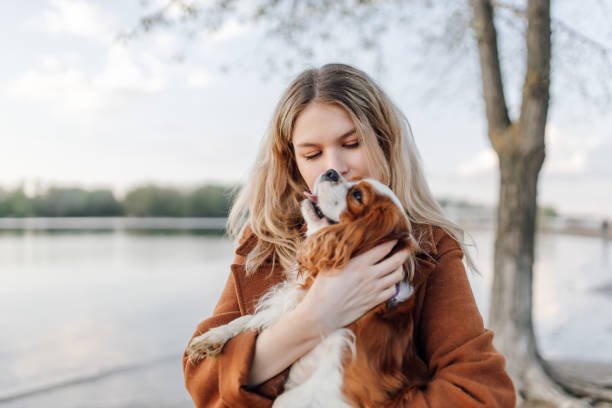
The grooming requirements are manageable. Regular brushing keeps her coat in good condition, and occasional professional grooming appointments help maintain her overall appearance. The cost of grooming averages around $50 to $70 per session, depending on your location.
Bella’s exercise needs align perfectly with our lifestyle. Daily walks and playtime in the backyard are enough to keep her happy and healthy. She’s excellent with our kids, and we never worry about her around them. Socialization was a breeze; she gets along with other dogs and adores meeting new people.
One of the challenges we’ve faced is her separation anxiety. She gets attached quickly, and leaving her alone was initially tough for her. We’ve worked on it with gradual training, and she’s improved significantly.
Overall, owning a Cavalier King Charles Spaniel is a heartwarming experience. The love and loyalty they offer in return are priceless.”
Testimonial 2: The Active and Adorable Companion
“Our Cavalier, Max, is the epitome of an active and adorable companion. He’s always up for an adventure, whether it’s hiking in the mountains or simply playing fetch in the backyard.
Max’s grooming needs are relatively low compared to other breeds. Regular brushing and occasional baths are usually sufficient. We’ve found that grooming expenses average around $300 to $400 annually.

His exercise routine is something we look forward to every day. He loves to run and explore, and his boundless energy keeps us active. We’ve discovered that taking him to the dog park is not only great exercise for him but also an opportunity to socialize with other dogs.
Max is incredibly intelligent and picked up on training quickly. He knows various tricks and commands, which makes him a pleasure to be around. However, his strong chasing instinct has led to a few encounters with squirrels in our backyard.
Owning a Cavalier King Charles Spaniel has its pros and cons. The pros include their loving nature, adaptability to various living environments, and compatibility with families. On the flip side, their attachment to their owners can lead to separation anxiety, and they can be prone to certain health issues. Despite the challenges, we wouldn’t trade our time with Max for anything in the world.”
Testimonial 3: The Heartwarming Journey
“Our Cavalier, Lily, has been on a heartwarming journey with our family. From the moment we brought her home, she showered us with love and affection. Her temperament is incredibly gentle, which makes her the perfect addition to our household.
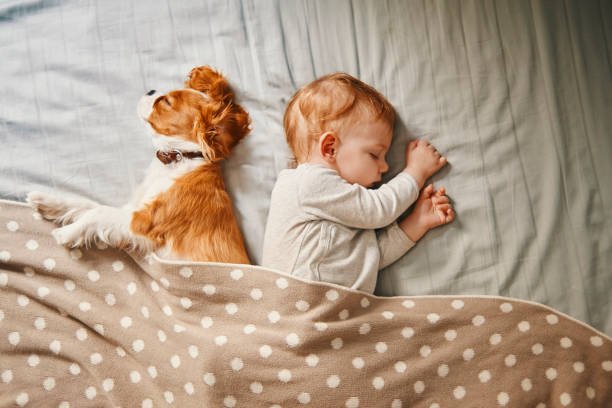
In terms of grooming, Lily requires regular brushing to keep her coat looking its best. We’ve also incorporated a monthly professional grooming session, which costs around $60 to $80.
Her exercise needs are manageable. We take her on daily walks, and she enjoys short play sessions in the yard. However, her favorite pastime is simply snuggling on the couch with us.
Socialization was a breeze for Lily. She’s friendly with everyone she meets, and we’ve had no issues with aggression or shyness. Training her was relatively easy, as she’s eager to please and quick to learn.
The cost of owning a Cavalier King Charles Spaniel varies depending on factors like location and veterinary care. We’ve found that annual expenses for food, grooming, vet visits, and supplies total approximately $1,000 to $1,500.
In summary, Lily has filled our lives with love, laughter, and companionship. While there are costs associated with owning any dog, the rewards of having a Cavalier by your side are immeasurable.”
Testimonial 4: A Wonderful Family Member
“Our Cavalier King Charles Spaniel, Charlie, has been a wonderful addition to our family. His gentle and loving nature has made him an instant favorite among family members and friends.
Charlie’s grooming needs are relatively low compared to some other breeds. Regular brushing and occasional baths suffice to keep his coat looking its best. The cost of grooming typically amounts to around $300 to $400 annually.
Exercise-wise, Charlie enjoys daily walks and playtime in the backyard. He’s also a great companion for our children, and we appreciate how gentle and patient he is with them.
Socialization was smooth for Charlie. He’s friendly with other dogs and is a hit at the dog park. He’s also welcoming to guests and visitors, making everyone feel at home.
While owning a Cavalier King Charles Spaniel comes with its share of expenses, including vet visits, food, and supplies, we wouldn’t have it any other way. The love and companionship Charlie provides are worth every penny.”
These personal stories and testimonials provide a genuine and heartfelt look into the experiences of Cavalier King Charles Spaniel owners. While there are costs associated with owning this breed, the love, companionship, and joy they bring to their families are immeasurable. Whether it’s their gentle temperament, playful spirit, or unwavering loyalty, Cavaliers leave an indelible mark on the hearts of those who choose them as their companions.
11. Breed-Specific Accessories and Care Products for Your Cavalier King Charles Spaniel
Caring for your Cavalier King Charles Spaniel involves not only love and attention but also the right accessories and care products to keep them happy, healthy, and comfortable. In this section, we’ll recommend specific accessories and care products tailored to the unique needs of the Cavalier King Charles Spaniel breed.
Grooming Tools
Cavalier King Charles Spaniels are known for their beautiful, silky coats that require regular grooming to keep them in top condition. Here are some grooming tools that will help you maintain your Cavalier’s coat:
1. Brushes: A slicker brush or pin brush is ideal for removing tangles and preventing mats in their long, silky fur. Regular brushing also distributes natural oils and keeps the coat shiny.
2. Comb: A fine-toothed comb can be used to comb through the feathering on their ears, legs, and tail. It helps to detangle any knots and keeps the coat looking pristine.
3. Grooming Scissors: A pair of high-quality grooming scissors is handy for trimming the hair around their paws and ears to maintain a neat appearance.
4. Nail Clippers: Invest in a good pair of nail clippers to keep their nails at a healthy length. Regular trimming prevents painful overgrowth and avoids scratches.
5. Ear Cleaner: Cavaliers are prone to ear infections due to their floppy ears. An ear cleaner designed for dogs can help keep their ears clean and infection-free.
6. Toothbrush and Toothpaste: Dental health is crucial. A dog-friendly toothbrush and toothpaste will help you maintain their oral hygiene.
Toys and Entertainment
Cavaliers are playful dogs that enjoy interactive toys and mental stimulation. Here are some toys and accessories to keep them entertained:
1. Interactive Toys: Puzzle toys and treat-dispensing toys challenge their minds and provide hours of entertainment.
2. Plush Toys: Soft, plush toys are perfect for their gentle nature. They often enjoy cuddling with a plush toy.
3. Balls: Tennis balls or rubber balls are great for a game of fetch, which Cavaliers love.
4. Chew Toys: Durable chew toys are essential for keeping their teeth healthy and preventing boredom.
5. Interactive Feeders: These toys slow down their eating and make mealtime more engaging.
6. Comfortable Bed: Invest in a comfortable dog bed to ensure your Cavalier has a cozy place to rest.
Harnesses and Collars
Choosing the right harness or collar is essential for your Cavalier’s comfort and safety, especially during walks. Here are some recommendations:
1. Harness: A harness distributes pressure more evenly than a collar and is a better choice for Cavaliers, who can be prone to tracheal problems. Opt for a well-fitting, padded harness for comfort.
2. Leash: A good-quality leash that is sturdy and the right length for your walks is essential.
3. Identification Tag: Ensure your Cavalier has an ID tag with your contact information in case they get lost.
Health and Wellness Products
Maintaining your Cavalier’s health is a top priority. Consider these health and wellness products:
1. Flea and Tick Prevention: Use vet-recommended flea and tick prevention products to protect your Cavalier from parasites.
2. Heartworm Prevention: Heartworm is a concern, so consult your vet and use appropriate prevention medication.
3. Supplements: Talk to your veterinarian about supplements that may benefit your dog’s health, such as omega-3 fatty acids for their coat or joint supplements for older Cavaliers.
4. First Aid Kit: Having a basic first aid kit for your dog is essential. Include items like bandages, antiseptic wipes, and tweezers.
5. Pet Insurance: Consider getting pet insurance to help with unexpected medical expenses.
Training Aids
Training your Cavalier King Charles Spaniel is crucial for their well-being and your peace of mind. Here are some training aids to consider:
1. Training Treats: High-quality training treats are a valuable tool for positive reinforcement training.
2. Clicker: A clicker can be used for clicker training, which is effective for teaching commands.
3. Training Pads: If you’re housetraining a puppy, training pads can be helpful.
4. Training Books and Videos: Invest in books or videos on dog training to enhance your training techniques.
5. Professional Training Classes: Enrolling in professional training classes is an excellent way to socialize your Cavalier and ensure they learn essential commands.
Travel and Safety Accessories
When you’re on the go with your Cavalier, safety is paramount. Consider these travel and safety accessories:
1. Car Safety Harness: A car safety harness or seat belt attachment keeps your Cavalier safe during car rides.
2. Travel Crate or Carrier: For air travel or road trips, a travel crate or carrier provides a secure and comfortable space for your dog.
3. Travel Water Bowl: A collapsible water bowl is handy for keeping your Cavalier hydrated while on the move.
4. Seat Covers: Protect your car seats from dog hair and dirt with seat covers designed for pets.
5. Poop Bags and Dispenser: Always carry poop bags and a dispenser for responsible cleanup during walks.
6. Microchip: Consider microchipping your Cavalier for added security in case they get lost.
Quality Food and Feeding Accessories
Maintaining a balanced diet is essential for your Cavalier’s health. Here are some recommendations for food and feeding accessories:
1. High-Quality Dog Food: Consult with your veterinarian to select a high-quality dog food that suits your Cavalier’s age, size, and specific dietary needs.
2. Elevated Feeding Bowls: Elevated bowls can help prevent digestive issues and make mealtime more comfortable for your dog.
3. Automatic Feeder: An automatic feeder can help with portion control and feeding consistency.
4. Food Storage Containers: Keep your dog’s food fresh and free from pests with airtight food storage containers.
5. Water Filter: Consider using a water filter to provide clean and fresh water for your Cavalier.
These breed-specific accessories and care products are tailored to the needs of Cavalier King Charles Spaniels. By providing the right tools and products, you can ensure that your beloved companion receives the best care, remains happy, and thrives in your loving home. Remember to consult with your veterinarian for specific recommendations based on your dog’s individual needs.
12. Frequently Asked Questions (FAQs) About Cavalier King Charles Spaniels
Here, we’ve compiled a list of 10 common questions and answers about the Cavalier King Charles Spaniel breed, addressing topics not covered in the main sections.
1. Are Cavalier King Charles Spaniels Good Family Dogs?
Yes, Cavalier King Charles Spaniels are excellent family dogs. They are known for their gentle and friendly nature, making them great companions for children and adults alike. Their adaptability and affectionate personality make them a loving addition to any family.
2. How Much Exercise Do Cavalier King Charles Spaniels Need?
Cavaliers have moderate exercise needs. They benefit from daily walks and playtime, but they are not overly demanding in terms of physical activity. However, mental stimulation is important for this intelligent breed, so interactive toys and training sessions are also essential.
3. Do Cavalier King Charles Spaniels Shed a Lot?
Yes, Cavaliers shed moderately throughout the year. Their silky, medium-length coat requires regular grooming to minimize shedding and prevent mats. Brushing them a few times a week helps keep loose hair under control.
4. Are Cavalier King Charles Spaniels Prone to Health Problems?
Cavaliers can be prone to certain health issues, including heart problems, ear infections (due to their floppy ears), and neurological conditions. It’s crucial to have regular veterinary check-ups to monitor their health and catch any issues early.
5. Do Cavaliers Get Along with Other Pets?
Cavalier King Charles Spaniels are generally good with other pets, including dogs and cats. However, early socialization is key to ensuring positive interactions. Always supervise introductions and provide a safe, controlled environment when introducing them to new animals.
6. Are Cavaliers Good Guard Dogs?
Cavaliers are not known for being guard dogs. They are usually friendly and sociable with strangers, which makes them more suited as family companions rather than guard dogs. However, they may bark to alert their owners to unfamiliar sounds or visitors.
7. What Is the Typical Lifespan of a Cavalier King Charles Spaniel?
The average lifespan of a Cavalier King Charles Spaniel is around 10 to 14 years. With proper care, some Cavaliers can even live beyond this range. Ensuring a healthy diet, regular exercise, and routine veterinary care can contribute to a longer and happier life.
8. Do Cavaliers Require Special Grooming?
While Cavaliers do have long, silky coats, their grooming needs are not excessively demanding. Regular brushing and occasional baths are essential to keep their coat in good condition. Many owners choose to have their Cavaliers professionally groomed a few times a year to maintain their appearance.
9. Are Cavaliers Good for First-Time Dog Owners?
Yes, Cavaliers can be suitable for first-time dog owners due to their friendly and easygoing nature. However, it’s important for new owners to commit to regular grooming, training, and healthcare to ensure the well-being of their Cavalier.
10. Can Cavaliers Live in Apartments?
Yes, Cavaliers can adapt well to apartment living as long as they receive enough exercise and attention. They are relatively small in size and are known for being adaptable to various living environments. Regular walks and playtime in a nearby park can meet their exercise needs, even in smaller spaces.
These FAQs address common questions about Cavalier King Charles Spaniels, helping you better understand this wonderful breed and what it takes to care for them as loving companions. Remember that individual dogs may have unique needs and personalities, so it’s important to get to know your specific Cavalier and tailor your care accordingly.
13. Conclusion
In this comprehensive guide, we’ve explored the wonderful world of Cavalier King Charles Spaniels, delving into their unique characteristics, care requirements, and what it takes to be a responsible owner of this charming breed. Let’s recap the key points, emphasize responsible ownership, and encourage adoption.
Summarize Key Points
Cavalier King Charles Spaniels are a breed known for their:
- Gentle and Affectionate Nature: They are loving companions, making them great family dogs.
- Moderate Exercise Needs: Daily walks and playtime are essential, but they’re not overly demanding.
- Silky Coat and Grooming: Regular brushing and occasional professional grooming maintain their elegant appearance.
- Health Considerations: Cavaliers can be prone to certain health issues, so regular veterinary check-ups are vital.
- Friendly with Other Pets: They usually get along well with other animals, given proper socialization.
- Moderate Shedding: Their moderate shedding can be managed with consistent grooming.
- Adaptability: Cavaliers can adapt to various living environments, including apartments.
- Average Lifespan: They typically live between 10 to 14 years with proper care.
Responsible Ownership
Being a responsible Cavalier King Charles Spaniel owner means:
- Regular Healthcare: Schedule routine veterinary check-ups and vaccinations to maintain their health.
- Proper Grooming: Invest time in grooming to keep their coat healthy and free from tangles.
- Training and Socialization: Provide training and early socialization to ensure well-behaved and confident pets.
- Exercise and Mental Stimulation: Meet their exercise needs and engage them mentally with toys and training.
- Love and Attention: Cavaliers thrive on love and attention, so be prepared to give them plenty.
- Responsible Breeding: If considering breeding, prioritize health screening and genetic diversity.
Encourage Adoption
While it’s tempting to buy a Cavalier King Charles Spaniel from a breeder, adoption is a wonderful option that can provide loving homes to dogs in need. Here are some reasons to consider adoption:
- Rescue and Second Chances: Many Cavaliers in shelters and rescue organizations are looking for their forever homes. By adopting, you provide them with a second chance at a happy life.
- Ethical Considerations: Supporting adoption contributes to reducing the demand for breeding and helps address the issue of pet overpopulation.
- Variety of Ages: Adoption offers a variety of ages, from puppies to adult dogs, allowing you to find the perfect match for your family.
- Pre-Loved Companions: Adopted Cavaliers often come with unique personalities and love to offer, just like any other dog.
- Resources and Support: Rescue organizations often provide valuable resources and support for adopters, ensuring a smooth transition for both the dog and the new family.
Additional Resources
For those considering Cavalier King Charles Spaniel adoption, here are some resources to explore:
- Local Animal Shelters: Check your local animal shelters and rescue organizations for Cavalier King Charles Spaniels in need of homes.
- Breed-Specific Rescue Groups: There are breed-specific rescue groups dedicated to Cavaliers, offering a specialized adoption process.
- Adoption Websites: Websites like Petfinder and Adopt-a-Pet list available dogs, making it easy to search for adoptable Cavaliers in your area.
In conclusion, Cavalier King Charles Spaniels are remarkable companions known for their gentle nature and loyalty. Responsible ownership involves proper care, grooming, training, and, importantly, considering adoption as a loving and ethical choice. Whether you’re a first-time dog owner or an experienced one, the joy of having a Cavalier by your side is immeasurable, and it’s a journey filled with love, laughter, and cherished moments.

